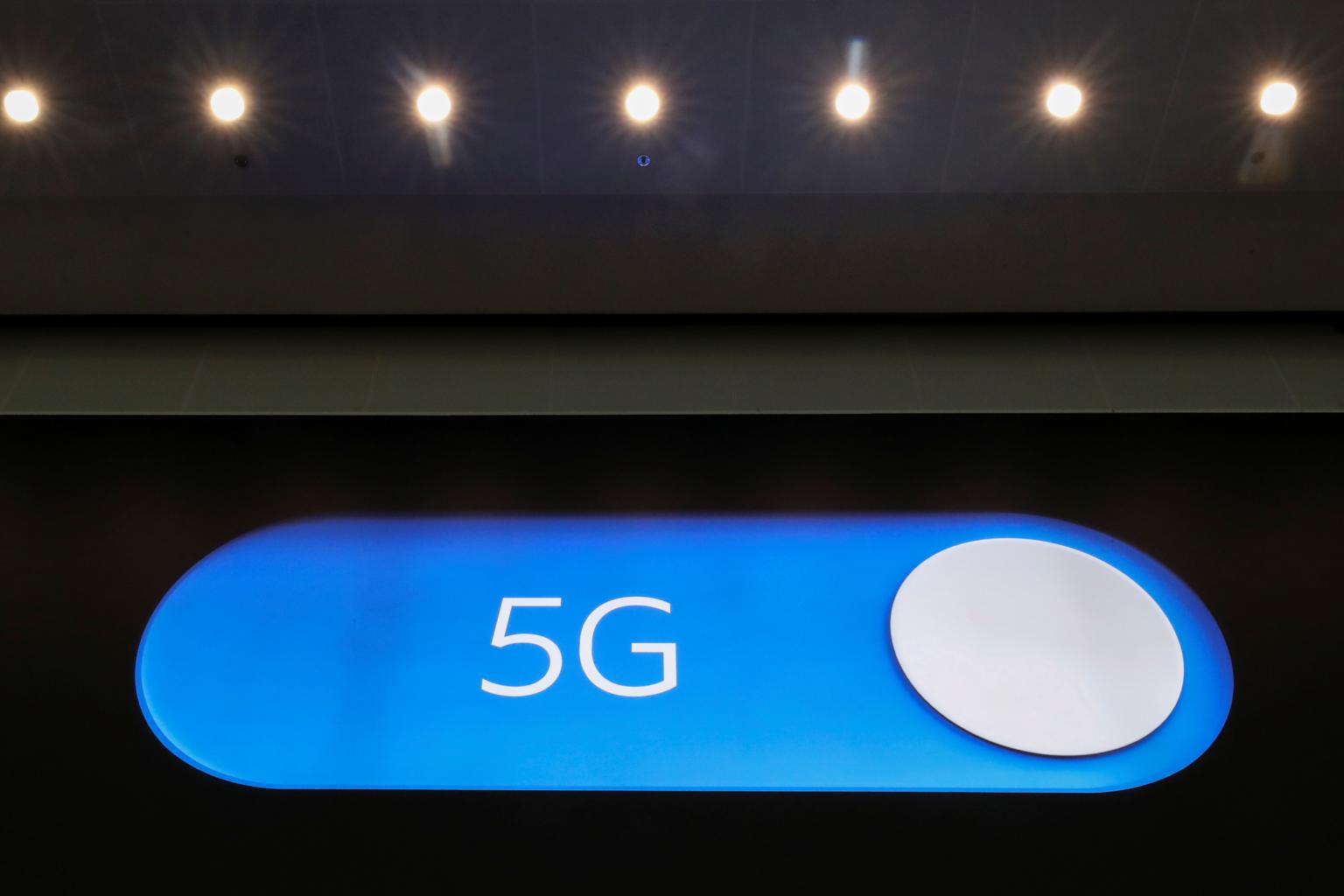Asian Voice
The race to 5G: Inquirer columnist
In his commentary, the writer says a new digital normal must include the multitude in danger of being left behind.
Sign up now: Get insights on Asia's fast-moving developments

An advertising board shows a 5G logo at the International Airport in Zaventem, Belgium, on May 4, 2020.
PHOTO: REUTERS
Michael Baylosis
Follow topic:
MANILA (PHILIPPINE DAILY INQUIRER/ASIA NEWS NETWORK) - This year should have been known as the "Year of 5G," the turning point for a new mobile networking landscape, instead of the hallmark year for physical distancing and the new normal.
Nonetheless, a pandemic should not impede technology but hasten it. If 5G is the timely technology we need today, how is the world easing into its development? How is the Philippines adapting with the change?
To get an idea of how big of a deal "fifth generation" (5G) wireless technology is, remember that its 4G predecessor was released way back in 2010, and 3G in 2001.
It was 3G that allowed us to surf the internet on our smart phones, while 4G paved the way for streaming.
These are already radical changes in themselves not just in how we use technology but also in how we function as a society. With 5G upon us, imagine the possibilities and the kind of decade the new upgrade will shape.
The world is prepping up for this new-generation shift despite recent major contractions. As Harry Baldock wrote for news site Total Telecom, the Year of 5G is "still on track." In the United States for instance, all major carriers are now offering 5G.
Our Asian neighbours are also advancing their deployment of the technology.
Takashi Kawakami of Nikkei Asian Review reported that China already has 50 million 5G subscribers, comprising 70 per cent of the world's 5G users at present.
Meanwhile, South Korea and Japan occupy the top spots in Opensignal's survey of average downlink speeds among 20 countries that have already released 5G.
In the Philippines, Globe Telecom pioneered the pilot testing of 5G in key districts in June last year.
Thailand, meanwhile, made 5G accessible to the general public last March, and by April, the new technology standard was being applied in Chulabhorn Hospital where 5G-enabled robots became frontliners in battling the coronavirus.
This innovative use of technology is exactly how 5G will transform a ravaged world and a perplexing new decade.
5G is not just fast internet and sleek, wireless gadgets. It will become our primary tool of connection in a time where our isolation has become a moral responsibility, and our new conduit while traditional and physical channels are still deemed unsafe.
In hospitals, 5G's latency can make remote patient care possible, thus reducing the risk for our health workers.
In business, it can facilitate work-from-home arrangements more efficiently. It can operate self-driving vehicles and revolutionise transportation in the new-normal environment. In schools, it can enhance online learning through augmented reality.
So far, with the quarantine brought on by the pandemic, business operations have been frozen, employees are meeting on Zoom, schools are shut down, and our frontliners are risking their lives every day.
All the more reason that the race to 5G should continue, to help alleviate the disruptions. On the education front, for instance, sentiments over online classes remain focused on the current state of our internet - expensive and relatively slow.
Many students simply do not have stable internet access, much less the capacity to buy devices and load.
The 2020 Inclusive Internet Index has ranked our country 63rd out of 100 and 19th among 26 in the Asia-Pacific region. The Speedtest Global Index, on the other hand, ranked us 121st in mobile and 110th in broadband.
Current circumstances have not only made technological developments worth pursuing. They have reinforced the idea of the internet as a basic need, and access to it as a human right.
The race to 5G envisions ushering the world into the new digital normal with ease and security. But if it is to work for all, it must include the multitude in danger of being left behind.
The writer is columnist with the paper. The Philippine Daily Inquirer is a member of The Straits Times media partner Asia News Network, an alliance of 24 news media entities.

